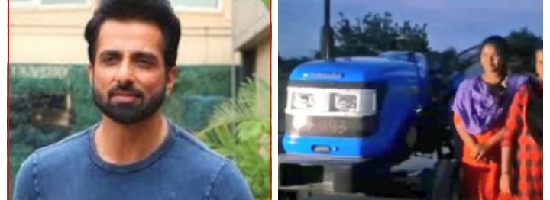New Delhi, May 14: Propelled by fascination for the unknown, a variety of creatures, from the abominable Himalayan snowman to its North American cousin Bigfoot, often cross over from myth into reality even though there is little evidence to back their existence.
As it was last fortnight when the Indian Army rekindled the Yeti mystery with its tweet showing pictures of large footprints in the snow in the higher Himalayas and claimed they belonged to the abominable snowman.
Experts believe the possible reasons behind the enduring obsession with the beings that inhabit the nebulous worlds of legend and folklore and ever so frequently enter the realm of everyday life are many -- from human curiosity and the need to connect with the past to identifying threats to the survival of humankind.
Loch Ness, Unicorn and Almas... the list of such creatures is long, cutting across regions and cultures.
The correlation between imagination and imagined reality is once again under the scanner with the Indian Army releasing pictures and videos of footprints captured close to the Makalu Base Camp in Nepal in March.
In Nepali folklore, Yeti is a mythical bipedal ape-like creature taller than an average human and is said to inhabit the Himalayas, Siberia, Central and East Asia.
Nepali officials later clarified the footprints belong to the Himalayan Black Bear active in the area.
“As we get farther from the real wild, we seek talismans to connect us to the wild. A half-man, half-ape creature is such a symbol. It gives humanity an identity as an animal in a world where we are otherwise making everything ‘of human manufacture’,” said American conservationist Daniel C Taylor who has spent 35 years in Nepal's Barun Valley dispelling the Yeti myth.
“I researched from 1956, when at age 11 I saw my first photograph of the footprint so I knew there was a real animal, to 1983 when I explained scientifically that it was the Himalayan Black Bear,” Taylor, who is also the author of the 2017 book, "Yeti: The Ecology of a Mystery", told news agency.
Given the lack of evidence of its existence, the scientific community has generally regarded the Yeti as a legend.
Such creatures have also been found to exist in other regions of the world.
“Fantasies are something which always give immense pleasure to the human mind and that is the main reason why people enjoy the stories around such mythological characters,” said Shweta Sharma, consultant clinical psychologist at Columbia Asia Hospital.
“One reason may be that people are afraid and want to watch out for the unknown, since they are wired to keep themselves safe and identify threats for survival,” Sharma, who is also a counsellor at the Jawaharlal Nehru University (JNU) Health Center, told news agency.
The second reason could be the basic human nature of curiosity which needs immediate gratification from a psychological point of view, she explained, adding that this also reflects in movies that are made.
Stories of the Yeti first emerged as a facet of Western popular culture in the 19th century.
Legends of hairy, oversize hominids lurking around the outer reaches of civilisation have been around for centuries and are part of the folklore of several cultures.
In North American folklore, Bigfoot or Sasquatch are said to be hairy, upright-walking, ape-like creatures that dwell in the wilderness and leave footprints like Yeti.
Depictions often portray them as a missing link between humans and human ancestors or other great apes.
“Living in cities and meeting the wild on TV screens, it is interesting that a Google search will reveal more Yeti (especially Bigfoot in US) sightings now than 20 years ago,” said Taylor, who is also president of the Future Generations University in the US.
The Almas or Alma, Mongolian for "wild man", is a purported hominid cryptozoological species reputed to inhabit the Pamir Mountains of Central Asia, and the Altai Mountains of western Mongolia.
Similarly, in Scottish folklore, the Loch Ness monster or Nessie is a creature said to inhabit the Scottish Highlands.
It is often described as large in size with a long neck and one or more humps protruding from the water.
Popular interest and belief in the creature has varied since it came to the attention of the world in 1933.
Evidence of its existence remains anecdotal, with a few disputed photographs and sonar readings.
“I think something like this has little to do with science and more to do with the human imagination and psyche,” noted T N C Vidya, associate professor of Evolutionary and Organismal Biology Unit at Bangalore's Jawaharlal Nehru Centre for Advanced Scientific Research (JNCASR).
“Perhaps when we are not satisfied with reality, we tend to come up with alternative realities to believe in,” Vidya said.
Closer home, the unicorn is a legendary creature that has been described since antiquity as a beast with a single large, pointed, spiralling horn projecting from its forehead.
The creature was depicted in ancient seals of the Indus Valley Civilization, covering parts of India and Pakistan, and was also mentioned by the ancient Greeks.
The unicorn is the most common motif on Indus seals.
Even in the 21st century, the unicorn holds a place in popular culture. It is often used as a symbol of fantasy or rarity.






Comments
Add new comment